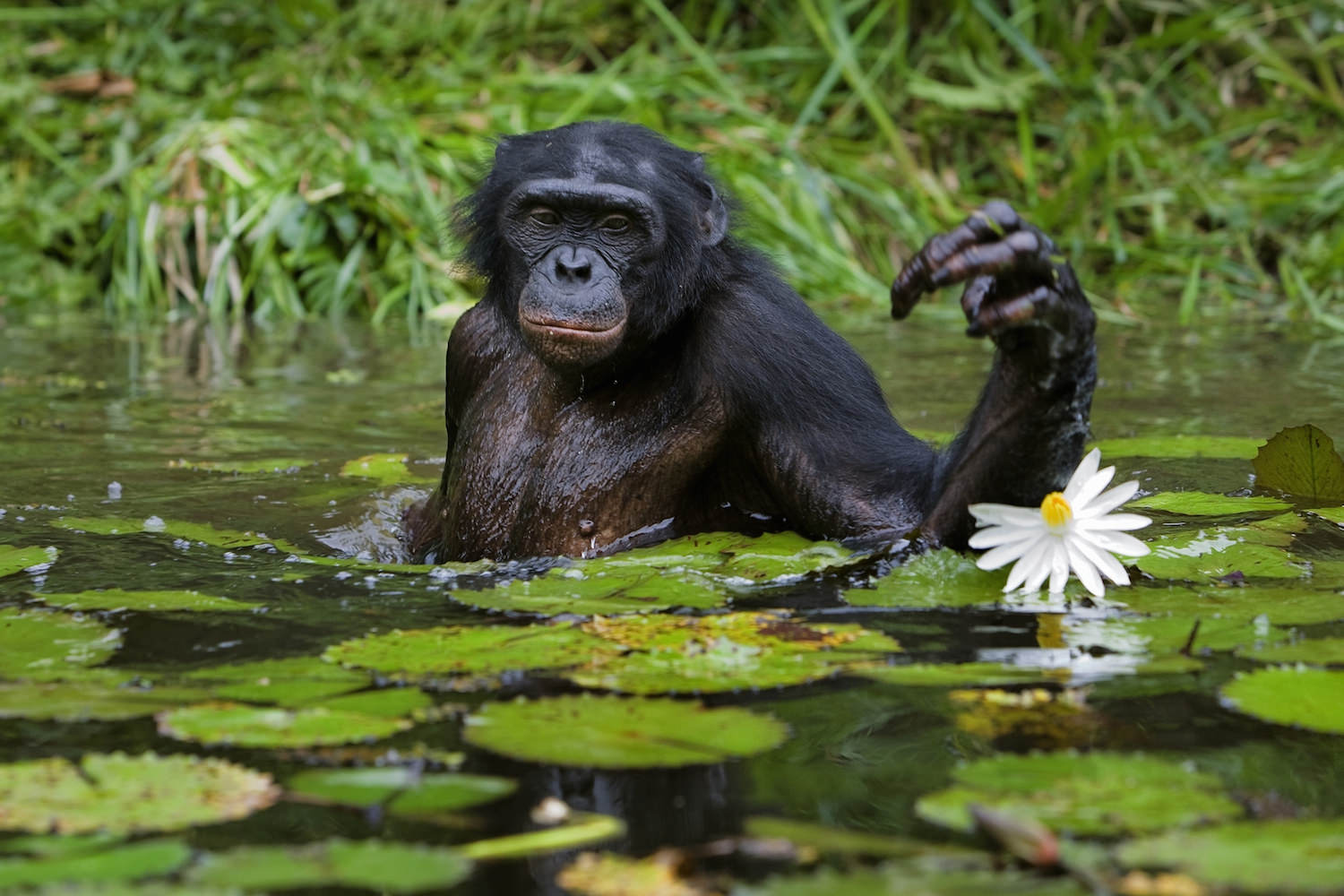Bonobos
Female bonobo hanging around in Congo
The scientific name for the bonobo is Pan paniscus and there are no subspecies. They live only in the forests of the Democratic Republic of Congo, Africa. Bonobos are classed as endangered.
Evolutionary History
Bonobos belong to the Hominidae family that includes humans, chimpanzees, orangutans and gorillas. Bonobos, along with chimpanzees, were the last great ape species to split from the human branch of the Hominidae family about 5-6 million years ago. Bonobos, and chimpanzees, are our closest evolutionary relatives. Bonobos and chimpanzees are closely related having split into separate species only around 1 million years ago.
Habitat
Bonobos live in rainforests and swamp forests. They tend to spend much of their time in the forest canopy and usually sleep in tree nests that they make out of branches.
Diet
Bonobo feeding on water lilies
Diet mostly consists of fruit, seeds, and leaves. They also eat meat, such as small monkeys, and invertebrates, such as termites. Water lily flowers are also a favourite and bonobos will happily wade into water to gather the flowers.
Social Structure
Bonobos live in large communities that sometimes have more than 100 members. The community will split into subgroups that travel independently around their home range. However, unlike chimpanzees, bonobo males do not patrol and protect the home range boarders against individuals from different communities.
When a subgroup returns to the community some of its members may leave to join other subgroups and/or new members will join the subgroup. This type of social dynamics is often referred to as fission-fusion.
Bonobos are the only great ape species in which females are the dominant sex. Bonobos are less competitive and aggressive than chimpanzees. The social dynamics of bonobo social systems rely heavily on sexual behaviour. Amongst other things, sex appears to diffuse aggression and help to form bonds between individuals.
Bonobo mother and her infant
Reproduction
Females usually have their first baby at 12-13 years of age. Pregnancy lasts around 8 months and the newborn is totally dependent on the mother and clings to her underbelly. After about six months the infant will sit on the mother’s back when travelling around. The infant is weaned around 4 years of age at which time the mother becomes fertile and usually pregnant soon afterwards.



